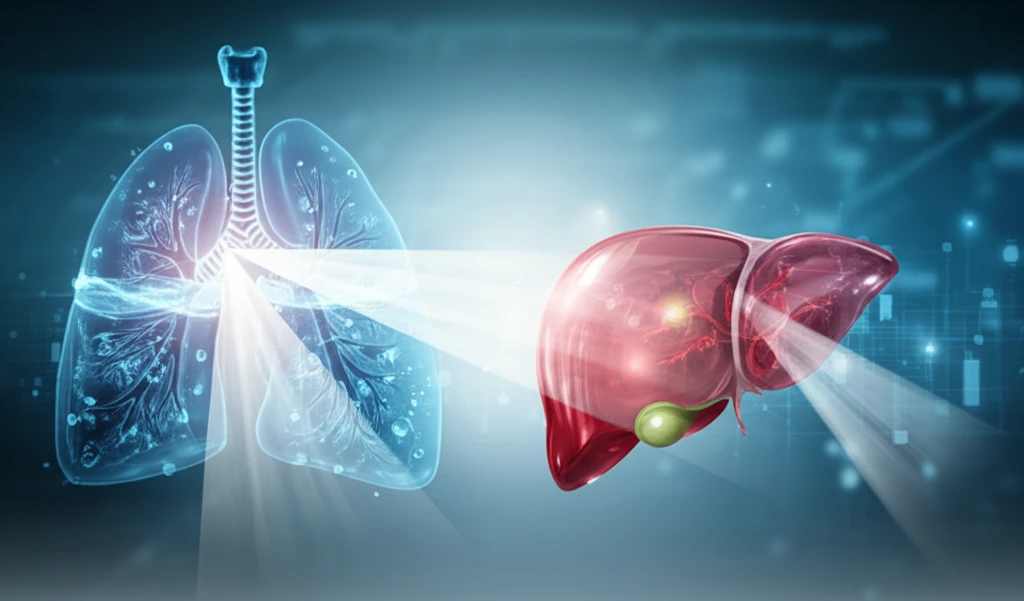
Flooded Lung Breakthrough: A New Pathway for Liver Ultrasound Therapy?
"Could a technique using flooded lungs revolutionize how we treat liver tumors with High-Intensity Focused Ultrasound (HIFU)?"
In recent years, High-Intensity Focused Ultrasound (HIFU) has emerged as a promising, non-invasive method for treating liver malignancies. This innovative approach allows doctors to target and destroy tumors without the need for traditional surgery, reducing risks and recovery times for patients.
However, there are challenges. Tumors located in the liver dome, the uppermost region of the liver, are difficult to treat with HIFU due to the presence of the adjacent lung. The air-filled lung acts as a barrier, blocking ultrasound waves and preventing them from reaching the tumor effectively. This limitation has spurred researchers to find creative solutions to overcome this acoustic obstacle.
One such solution is 'one-lung flooding' (OLF), a technique that involves filling one lung with a saline solution. This enables complete sonography of the lung and adjoining organs, including the liver. Filling the lung with fluid creates a clear pathway for ultrasound waves, allowing for more precise and effective HIFU ablation of liver tumors. In this study, we explore the feasibility of ultrasound-guided transthoracic, transpulmonary HIFU ablation of the liver using OLF.
One-Lung Flooding: A Novel Approach to Liver Tumor Treatment

Researchers are exploring one-lung flooding (OLF) as a way to enhance the effectiveness of High-Intensity Focused Ultrasound (HIFU) for treating liver tumors located in challenging areas. This method involves temporarily filling one lung with saline solution to create a clear acoustic pathway for the ultrasound waves.
- Lung Preparation: The right lung was carefully filled with a degassed and tempered isotonic saline solution, matching the functional residual capacity and tidal volume of a pig lung.
- HIFU Application: After carefully preparing and positioning the animal, the researchers used a diagnostic imaging system to visualize the flooded lung and liver. A specialized HIFU applicator was then used to deliver targeted ultrasound energy to create thermal lesions in the liver tissue.
- Lesion Creation: The HIFU focus was carefully positioned within the liver under constant imaging control, ensuring a direct pathway through the flooded lung and diaphragm. The liver tissue was exposed to HIFU for five seconds, with breath-holding periods to minimize movement.
The Future of Liver Tumor Treatment
The study concludes that flooded lung provides a suitable pathway for applying HIFU to the liver, enabling a transthoracic, transpulmonary approach. The enlarged acoustic window could enhance the ablation speed for targets in the hepatic dome. The one-lung flooding technique may pave the way for more effective and less invasive treatments of liver tumors.
